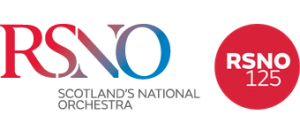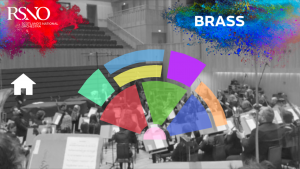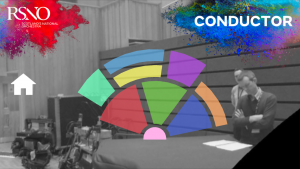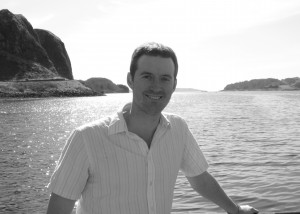Sauchiehall
Published by: Oliver Searle
About: Royal Scottish National Orchestra, Oliver Searle
I moved to Glasgow in 2001, and since then, have witnessed the music scene flourish (to perhaps the second largest in the UK, although I only have anecdotal evidence to support this statement), and encountered a certain amount of backtracking and surprisingly positive comments about the city from those who might once have slated its history and outward image. I never expected to end up living here and am unsure if it would have had the same draw as a city in attracting people to stay even 20 or 30 years ago, particularly in the way in which it has fostered an ever-growing community of artists and musicians.
Sauchiehall Street was always a mythical place when I was younger, alive with stories of nights out and goings-on, delivered to me by older people on return to my home town. I remember on occasion passing through Glasgow (on a bus back from a sporting event when I was a young teenager), and looking out of the window in awe (and with some trepidation) at Sauchiehall Street on a Saturday night.
The street has obviously had various heydays, high points and low points, but still seems to be a watchword for the city itself, regardless of its fortunes. It has an amazing history of events and the steady stream of people and businesses that have frequented it over time (and continue to do so) have left their mark in many ways.
When I was approached in 2015 to write a new work for the RSNO(as part of their 125th Anniversary celebrations), Sauchiehall Street seemed like an obvious starting point for me. The orchestra has moved from one end of the street to the other (Henry Wood Hall, to the GRCH), past many music venues and sites of historical interest; the name itself is also iconic and a little unusual (apparently a rough translation from Scots would be ‘willow grove’).
the RSNO(as part of their 125th Anniversary celebrations), Sauchiehall Street seemed like an obvious starting point for me. The orchestra has moved from one end of the street to the other (Henry Wood Hall, to the GRCH), past many music venues and sites of historical interest; the name itself is also iconic and a little unusual (apparently a rough translation from Scots would be ‘willow grove’).
Although the work has been performed live, the principal function of the piece was for a recording, which would be included in an App, to help introduce a wider audience to the orchestra, as well as to new music. Within the App, a listener can choose their own path through the work, making decisions about where they would like to sit within the orchestra during the course of the piece.
I spent a day with the Orchestra in February 2016, recording with binaural microphones (the ones that are rather freakishly shaped like disembodied human ears!), in their new hall at the GRCH, which entailed a certain amount of stopping and starting to try and allow the individual ideas contained within the work to be conveyed as clearly as possible.
Sauchiehall is a homage to the street (and perhaps, therefore, the city of Glasgow), and the music venues here or nearby that have called it home over the years, attempting to give a short musical snapshot of the area, both past and present. Having considered how listeners might experience this work within the App, I decided to draw on a number of musical references, which are overlayed and juxtaposed, presented by different sections of the orchestra at the same time, thus allowing listeners to focus more closely on one layer at a time.
 These references include:
These references include:
- A Reel melody (a reference to Scottish traditional music, which is heard in full at the end, in the high strings)
- A fragment of a short song by Gustav Holst (The Thought; a homage to Holst, who used to play in the orchestra), the opening gesture of which opens the piece, then returns with a longer phrase in the middle section
- A brass fanfare, based on the Hallelujah Chorus (the first piece of music performed by the orchestra)
- A rock drum rhythm and accompanying bass-line (a homage to the amount of rock and metal bands I have seen performing live in Glasgow)
- 1930s dance-band material (a reference to the number of dance halls and cinemas on Sauchiehall Street at one time).
- A hymn tune (a reference to the long-gone churches that are sadly a lost part of Glasgow’s heritage)
- A simple Buddhist melody in the horns towards the end (there is a Buddhist centre on Sauchiehall Street, which I have walked past for many years!), which gradually builds, as if starting from afar and moving past in a procession
- Orchestration in the style of Copland’s Corral Nocturne (from Rodeo; he conducted the work with the orchestra in 1964), in the slower middle section
- The ‘Humming Chorus’ from Madam Butterfly (the first production by Scottish Opera, for which the orchestra performed under the baton of Alexander Gibson), this is also overlayed with Copland and Holst in the middle section of the work
I initially began experimenting with an online device called a ‘YouTube doubler’, in which you can run two music videos simultaneously; this was the starting point for the work, putting  the Corral Nocturne alongside the Humming Chorus and enjoying the result so much that I began to notate sections of it for use in the final piece.
the Corral Nocturne alongside the Humming Chorus and enjoying the result so much that I began to notate sections of it for use in the final piece.
It is not the first time I have incorporated references to Sauchiehall Street or Glasgow in my work; I have increasingly become interested by our attachments – socially and culturally – to the places we were born, grew up in, or live and work, and how these may change over time. I am quite inspired by local history, or places I have visited, and how this might trigger musical references from personal memories.
In 2007, I also wrote Pride, Poverty and Pianos, a large-scale work for choir and orchestra (for the BBCSSO), drawing on the history of the East End of Glasgow and stories from local residents, which also included a live recording of boy racers on Sauchiehall Street, mixed with fragments of an Orange March and percussive rock rhythms.
Sauchiehall can be heard by downloading the RSNO 360 App, available from the Apple App store.
Upcoming events
- 12 Jan 2026, 12:30
[Covfefe: online monthly coffee chat for composers & musicians] - 23 Jan 2026, 18:00
[The Night With... Haptic and Stef Conner] - 25 Jan 2026, 19:30
[The Night With... Haptic and Stef Conner] - 26 Jan 2026, 12:30
[Covfefe: online monthly coffee chat for composers & musicians] - 31 Jan 2026, 19:30
[The Night With... Haptic and Stef Conner]
Recent updates
Works
- Quartet no 6 (Ma), by Matthew Whiteside
- Perihelion, by Neil Tòmas Smith
- Above the Stars, by Aileen Sweeney
Events
- The Night With... Haptic and Stef Conner
- The Night With... United Strings of Europe
- The Night With... Ensemble Offspring
Projects
- Aides... mémoires... Project album launch
- On a Wing and a Prayer
- On a Wing and a Prayer - presentation
Opportunities
- Noisy Nights in Glasgow – Call for Scores
- Red Note is looking for a new Chair of the Board
- In Motion 2026 - Sound and Music

